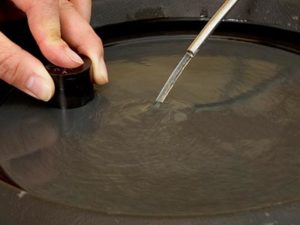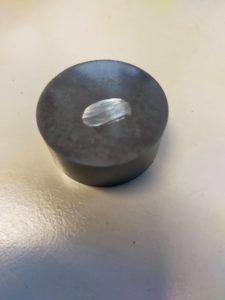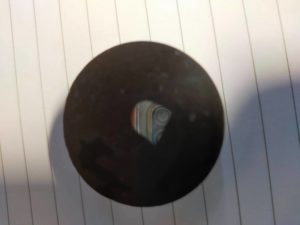
Before analysing samples via microscopy or X-ray diffraction, it must be ensured that the sample surface is planar and completely cleaned. To ensure this, samples are ground and polished before characterisation.
For ease of handling, the samples are first mounted in bakelite under elevated temperature and pressure. OPAL460 mounting press apparatus is used, at a temperature and pressure of 180C and 180atm, respectively.
To grind the samples – therefore ensuring a smooth, planar surface – the exposed edges are ground against silicon carbide paper on a grinding wheel. Papers of decreasing grit are used to smooth the surface further, with higher grits requiring a shorter time, and lower grits requiring more grinding time as their ability to remove surface material is reduced.
After ensuring a smooth surface, the samples are then polished with a suspension containing hard abrasive particles, made of diamond or silicon carbide, against a neoprene polishing cloth. The purpose of this is to reveal the microstructure, by ensuring a smooth surface down to 0.25um, such that electon beam microscopy may be employed.


After polishing, the sample should be cleaned in an ultrasound bath, which removes small particulates left over from preparation with ultrasonic vibrations to dislodge them.To reveal the microstructure further, an etchant may be applied to the surface of the sample. Etchants preferentially erode grain boundaries, making them more prominent under a microscope.
Figures
Figure One: Polishing a metallographic specimen using lubricating fluid and diamond products (source here)
Figure Two: Unpolished sample – original cut surface, mounted in bakelite.
Figure Three: Mirror finish sample – camera lens visible in surface. This sample was ground against SiC grinding papers of decreasing grit, before polishing with a 0.25um silicon carbide suspension.
